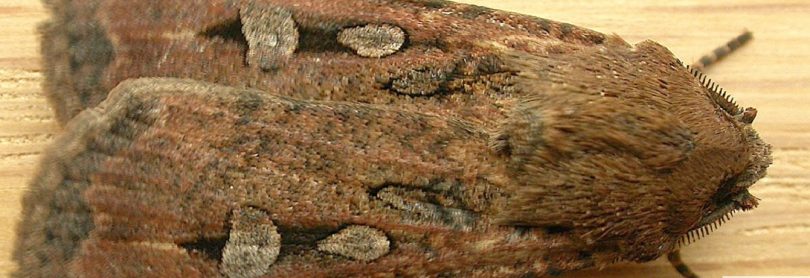
The bogong moth – endemic to the Tumut and Gundagai region – was guarded by the “Goolgul” until they were ready to fly. This and many other Aboriginal stories which are reflective of the region’s rich history and culture have been captured in interpretive signage located in both towns. Photo: Backyard Buddies.
A Snowy Mountains road project is helping preserve local Aboriginal storytelling and bringing information about sacred sites to the community, passing motorists and tourists.
Bogong moths – endemic to the area – and the dreaded “Goolgul”, who has always lived in the mountains, are among the stories captured in interpretive signs at Tumut and Gundagai.
One of the signs reads: “The high country was a place where people from many different Aboriginal groups came together, travelling hundreds of kilometres from the plains, the tablelands and the coast. They met at places on the edges of the high country, meeting at Tumut and Gundagai before travelling further up into the mountains. You are standing in a rich cultural landscape with many places of significance, including mountains of Mudjarn, Minjary and Thelbingug (Talbingo), Bogong Peaks and the Murrumbidgee River.”

The picturesque Gocup Road now has another feature which tips its hat to the region’s Aboriginal heritage. Photo: Roads and Maritime Services.
In the telling of Uncle Jimmy Ingram, the Goolgul lived in those mountains and guarded bogong moths until they were ready to fly.
He also tricked young kids and collected them.
“The only way you could get him out is throwing water over him because he couldn’t swim, and ’cause he smelt to high heaven – he didn’t like water,” said Uncle Jimmy.
Aunty Alice Williams, who represents the Wiradjuri and Wolgalu Aboriginal people, said the community welcomed the opportunity to preserve local cultural heritage.
“These signs are a great opportunity to educate and inform the wider community about the cultural significance of the landscape of the surrounding areas to the local Aboriginal people,” said Aunty Alice.
Transport for NSW South West acting director Jonathan Tasker said the signs acknowledge the six identified Aboriginal cultural sites along Gocup Road.
“Transport for NSW consulted extensively and worked collaboratively with local Aboriginal knowledge holders and local councils to develop content and imagery for the signs,” he said.
The signs are the final part of the $70 million upgrade of Gocup Road, which provides a 31km link between the Snowy Mountains Highway at Tumut and the Hume Highway at Gundagai – a vital connection between the economic hubs of Sydney and Melbourne.
The five-year upgrade work on a windy and undulating road has provided motorists with improved safety, reduced travel time and better freight efficiency. Not to mention the striking views.
The signs are located at Carberry Park in Gundagai and about 200m along the Snowy Mountains Highway from the intersection with Gocup Road, just past the NSW State Emergency Service building in Tumut.






